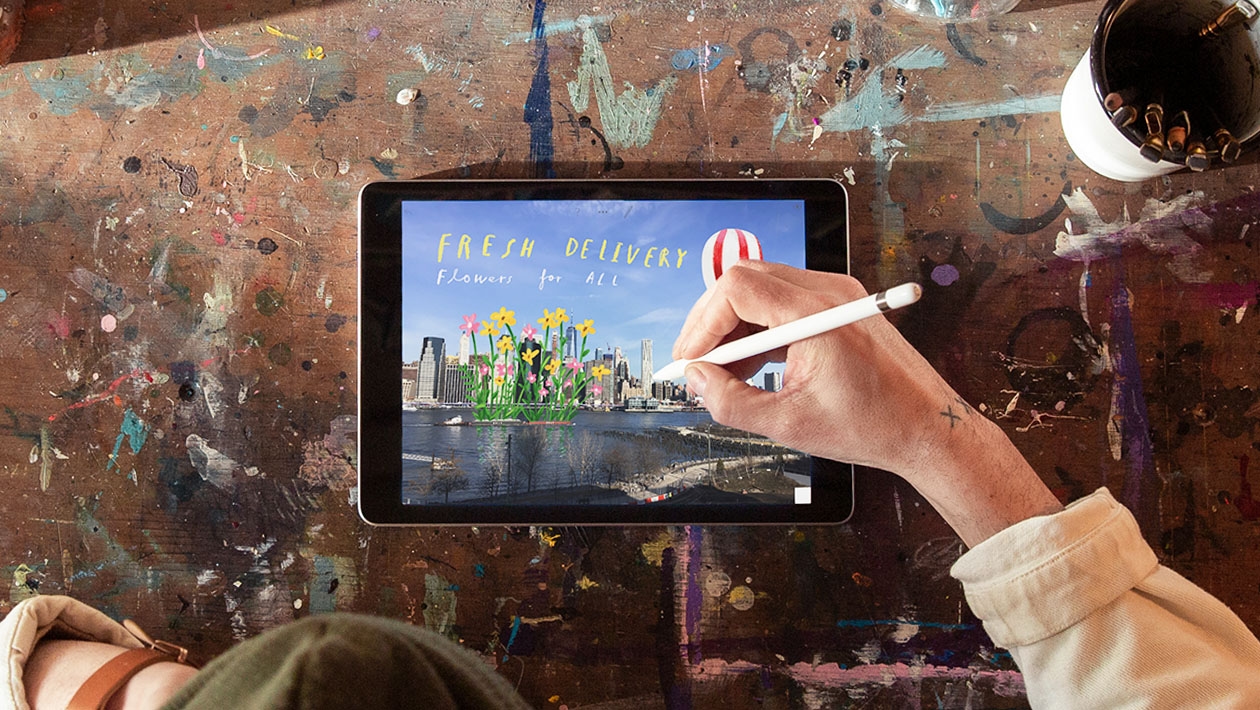Explore the power of shapes and vibrant colours in this fun activity. Challenge your students to unleash their inner abstract artist! This activity can be accessed by all ages and allows for increasing levels of detail and complexity.
The Scottish Curriculum for Excellence includes the following outcomes for art and design:
- I can respond to the work of artists and designers by discussing my thoughts and feelings.
- I have the opportunity to choose and explore a range of media and technologies to create images and objects, discovering their effects and suitability for specific tasks.
Learning Objectives
- Students will be able to identify and describe key characteristics of abstract geometric art.
- Students will learn about the life and work of Wassily Kandinsky and his contribution to abstract art.
- Students will learn to use the shape and colour tools within the Keynote app on iPad.
- Students will be able to create their own abstract geometric artwork inspired by Kandinsky.
The Process - Engage and Explore Abstract Art
What do you think art is? - Discuss ideas and introduce the concept that art doesn't always have to look like real-life objects.
Visual prompt - Show students a few different styles of art (e.g., a landscape, a portrait, and then an abstract geometric piece). Ask them what they notice about the differences.
What is abstract art? - Explain that abstract art focuses on shapes, colours, lines, and textures rather than realistic representations. Geometric art specifically uses clear, defined shapes.
Geometric shape activity - On their mini-whiteboards, pupils to draw some basic geometric shapes and name them. Discuss how these simple shapes can be combined in different ways. Model this on class interactive whiteboard/display.
Introduce Kandinsky - Briefly introduce Wassily Kandinsky as a pioneer of abstract art. Share some interesting and age-appropriate facts about his life and his belief that colours and shapes could express emotions and music.
Artwork analysis - Show several examples of Kandinsky's artwork (e.g., "Composition VIII," "Squares with Concentric Circles").
Guided Observation - Ask questions to guide their observation:
- What shapes do you see?
- What colours are used?
- How are the shapes and colours arranged?
- Do the colours make you feel a certain way? Which ones and why?
- Do the shapes remind you of anything (without being literal)? Do they seem energetic or calm?
Discuss artistic intention - Explain that Kandinsky wasn't trying to paint specific objects but rather to create visual music and express inner feelings through the arrangement of these elements.
The Process - Creation of Abstract Art in Keynote
Demonstration (basic shapes) - While the pupils have a good understanding of Keynote and the tools within, it is worth recapping the following: adding shapes, resizing and rotating, changing colours and colour effects, layering and duplicating.
Combining and Breaking Apart - For my pupils, this was the newer skills concept to be introduced. The various ways to combine shapes and how to break them apart to further adapt and personalise their creation.
Task - Explain to students that they will be creating their own abstract geometric artwork inspired by Wassily Kandinsky using the shapes and colours in Keynote.
Encourage them to think about:
- Emotions: What feelings do they want to express through their artwork?
- Music: Can they imagine their artwork having a rhythm or melody created by the shapes and colours?
- Arrangement: How can they arrange the shapes and colours in an interesting and visually appealing way?
- Guidance: Remind them that there are no right or wrong answers in abstract art. Encourage experimentation and creativity. Circulate around the room, offering support and answering questions.
- Suggestions:
- Overlapping shapes.
- Using contrasting colours
- Creating patterns with repeated shapes
- Varying the size and scale of their shapes
- Using lines to connect or separate shapes
- Breaking apart existing shapes to create new ones
- Combining shapes in different ways for greater impact
Sharing and Reflection - Invite students to share their artwork with the class. Explaining their inspiration, emotions and ideas behind their art and what they enjoyed about using Keynote to create their art.
Reflection
Abstract art can be a tricky thing for pupils to get their heads around. Spending the time reflecting on the work of abstract artists and what they were trying to communicate in various pieces is hugely important. Visual prompts of basic compositions or colour combinations were displayed throughout the activity to support those pupils who needed help getting started. Some pupils struggled with their initial ideas so sketching with the drawing tools to begin really helped.
Assessment - I am a big fan of a rubric so for this activity included the following criteria for both teacher, self and peer assessment:
- Use of geometric shapes
- Effective use of colour
- Evidence of experimentation and creativity
- Effort and engagement with the task
- Contributions during sharing and reflection
Extension Activities
- Research other abstract artists who use geometric shapes (e.g., Piet Mondrian).
- Create a collaborative abstract geometric artwork as a class using a shared Keynote presentation or another digital art platform.
- Experiment with creating abstract art using traditional materials like coloured paper cutouts and glue.
- Explore the connection between Kandinsky's art and music further by listening to music and then creating abstract art inspired by it.












April 10, 2025 . English
English
Ruth, Love this so much! Such a creative idea! Isn't creativity great? Well done and thank you for sharing! I am going to try this.
This action is unavailable while under moderation.
This action is unavailable while under moderation.